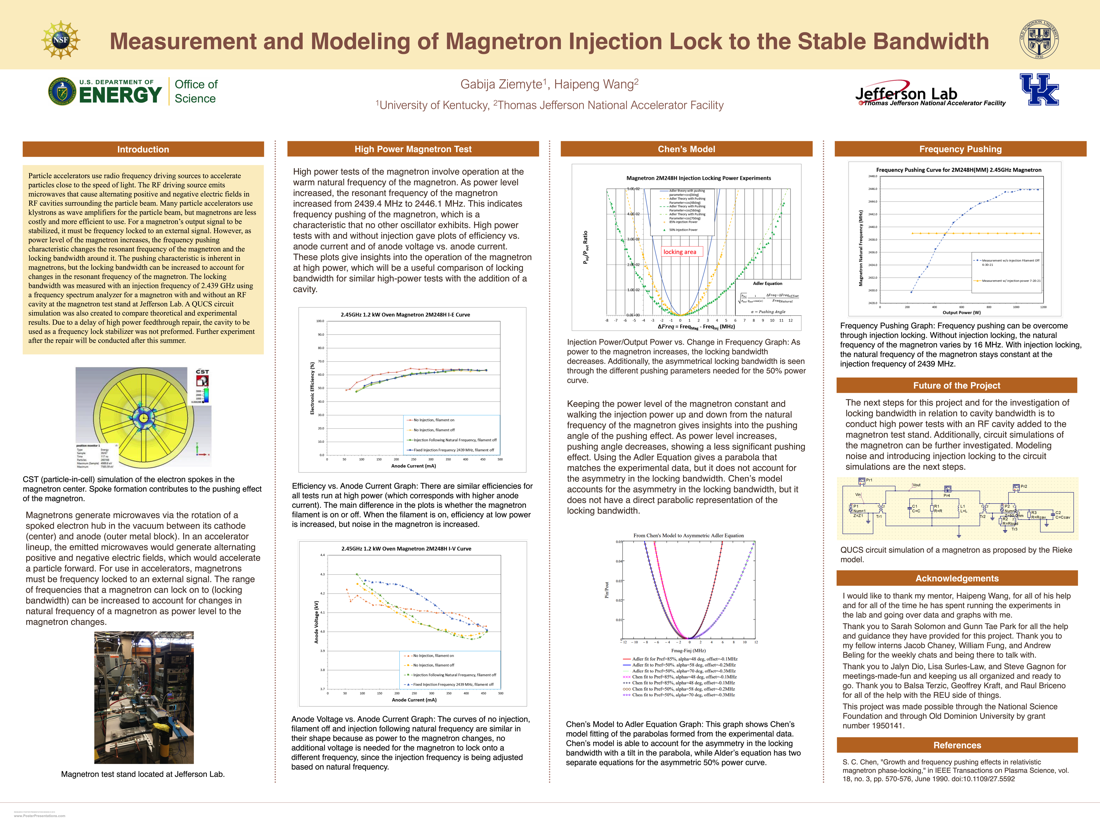Undergraduate Research at Jefferson Lab
Measurement and Modeling of Magnetron Injection Lock to the Stable Bandwidth
Student: Gabija Ziemyte
School: University of Kentucky
Mentored By: Haipeng Wang
Particle accelerators use radio frequency driving sources to accelerate particles close to the speed of light. The RF driving source emits microwaves that cause alternating positive and negative electric fields in RF cavities surrounding the particle beam. Many particle accelerators use klystrons as wave amplifiers for the particle beam, but magnetrons are less costly and more efficient to use. For a magnetron's output signal to be stabilized, it must be frequency locked to an external signal. However, as power level of the magnetron increases, the frequency pushing characteristic changes the resonant frequency of the magnetron and the locking bandwidth around it. The pushing characteristic is inherent in magnetrons, but the locking bandwidth can be increased to account for changes in the resonant frequency of the magnetron. The locking bandwidth was measured with an injection frequency of 2.439 GHz using a frequency spectrum analyzer for a magnetron with and without an RF cavity at the magnetron test stand at Jefferson Lab. A QUCS circuit simulation was also created to compare theoretical and experimental results. We found that adding an RF cavity to the magnetron test stand increases the locking bandwidth by 2 MHz. This shows that the cavity acts as a frequency stabilizer, thereby increasing the limits of injection signal that the magnetron can lock on to. What this suggests is that high-power magnetrons can be operated more efficiently and consistently with the use of an RF cavity as its load or power combiner.
[Watch the presentation on YouTube]

Citation and linking information
For questions about this page, please contact Education Web Administrator.
